All,
I had been looking for a while and it seems that most of the battery trays/chests made are for commercial use, and pricing is out of my range.
So - I designed and built my own. I worked with my good friend Paul Schreiner (of PS Composites) and we designed and made a mold for my battery trays.
The tray dimensions are basically 24" x 31" and can hold up to six #31 sized batteries. We also designed the trays to have the capacity of slightly over 2 gallons of capacity, this way if one or more batteries rupture the battery acid is contained.
Here are a couple pictures of one of the trays:


I decided to have mine colored green (as this is a green project) but Paul can make them any color you want - even metal flake! Next on my job list is to make a simple wood chest and a pexiglass top to contain the batteries.
I will be using two trays, and building a simple wood chest and pexiglass top to contain them. In addition I will have the chest vented using a fan.
These trays are a good starting point for building a chest, if you are interested in purchasing any give Paul a call, his phone number is on his website.
I have no affilliation with PS Composites - Paul is a good friend of mine.
Since winter has been in the WV mountains I have been busy working on getting the back-end electronics and wiring installed for my wind turbine project.
Over the last month or so I got the Xantrex XW-6048 inverter installed.

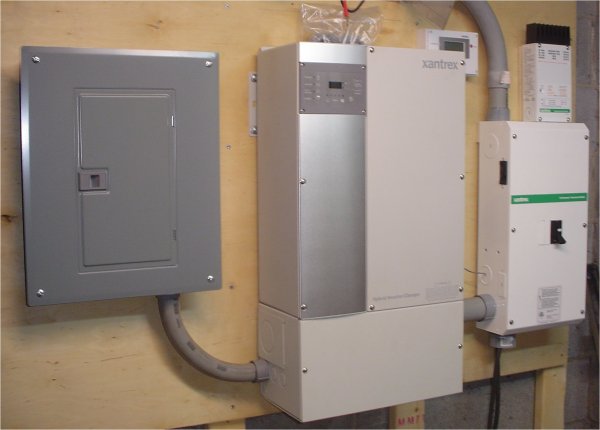
Along with wiring up the DC250 dc distribution box, as well as installing the auxillary AC panel, you can see that I also added a (-) and (+) buss bars to make wiring connections easier and neater, these buss bars are made by Outback and have insulated stand-off's as well as a plastic barrier
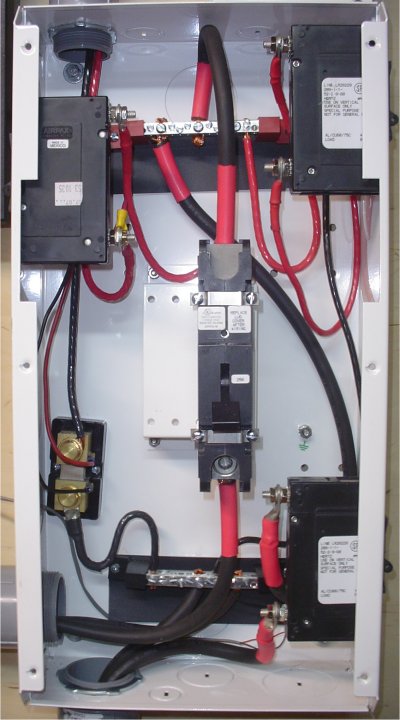
As well as made a platform which will hold the batteries/battery trays.
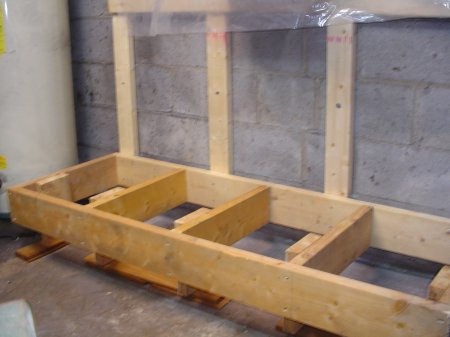
I also came up with an easy/consistant way in which to solder up the lugs onto heavy #2 cable, and made up all of the battery interconnects and cables. You can save yourself a bunch of money by making up your own cables.
The cable that I am using for the battery inter-connects is a #2 S/O stranded copper wire, it is very flexible and bends easily, it is widely available as cable that is used for welding, our local Tractor Supply carries it. When making your cables you want them to be as short as possible, but you also don't want the cables pulled straight and tight either, leave an inch or so extra to give them a little slack.
If you do decide to make your own I have learned that there are two kinds of soldering flux available, one which is an aggressive flux that states that it should not be used with electrical connections. It looks like the 'standard paste flux' is not an agressive flux and should work fine for use here, so be sure to read the label that is on the flux so that you use the right one!
With some experimenting I discovered that if you applied soldering flux to the inside of the lug (and on the cable) along with 5 lengths of solder (about .050" diameter) that it works out quite well. Four lengths did not seem to be enough solder to properly do the job.
The first photo below shows the lug filled with solder, it is held in place using some vise-grips:
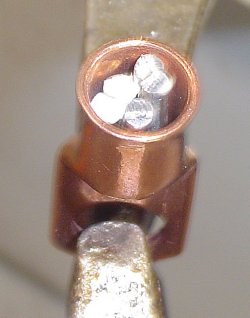
Next using a propane torch heat the lug until the solder melts this should only take about 10-15 seconds, if it takes longer then you are not using enough heat. Once the lengths of solder have melted into a pool, remove heat (mainly so you don't burn your finger tips) and put the prepped end of the cable into the lug but do not push in yet! You have to apply more heat to the side of the lug, you need to do this so the lub and the cable can get to the proper temperature. After about 10-15 seconds or so push down on the cable twisting it into the hot bath of solder inside the lug. Once the cable is in, continue to heat for another couple of seconds so that the solder works it's way all through the cable strands and then you're done!
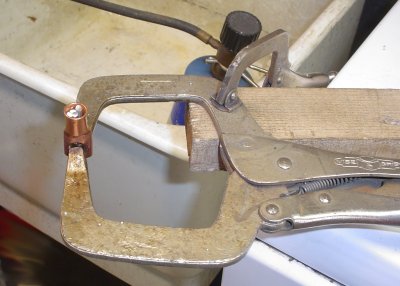
Cool and wash off the excess residue of flux and clean the surfaces with a rag, finish off the cable ends by using some lengths of the proper colored heat-shrink tubing:
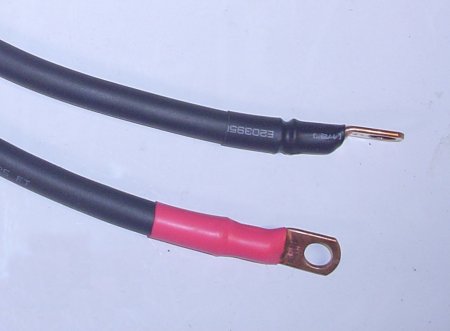
To be continued...
Dan Lenox